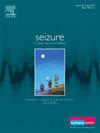迷走神经刺激对难治性癫痫伴肌阵挛性无张力发作的影响:病例系列见解
IF 2.7
3区 医学
Q2 CLINICAL NEUROLOGY
引用次数: 0
摘要
目的癫痫合并肌阵挛性无张力发作(EMAtS)是一种罕见的儿童期发病的发育性和癫痫性脑病,通常对药物治疗有抗性,并伴有显著的认知障碍。早期癫痫发作控制对神经发育的最佳结果至关重要。本研究描述了迷走神经刺激(VNS)植入emat儿童后的癫痫发作频率和神经发育结果。方法回顾性分析2011年至2024年5月期间接受VNS植入治疗顽固性癫痫发作的emat患儿。结果6例emat患儿接受了VNS植入,平均随访4.6年。vns激活6个月后,5例患者癫痫发作频率或强度显著改善,其中4例患者癫痫发作平均减少76%。最后一次随访(平均8.1年),3例患者无癫痫发作。4例患者神经心理预后良好。结论VNS可作为难治性emat患儿的有效治疗选择,可改善癫痫发作控制和神经发育结局。本文章由计算机程序翻译,如有差异,请以英文原文为准。
Impact of vagus nerve stimulation on refractory epilepsy with myoclonic atonic seizures: Case series insights
Purpose
Epilepsy with myoclonic atonic seizures (EMAtS) is a rare childhood-onset developmental and epileptic encephalopathy, often resistant to pharmacologic treatments and is associated with significant cognitive impairments. Early seizure control is crucial for optimal neurodevelopmental outcomes. This study describes seizure frequency and neurodevelopmental outcome following vagus nerve stimulation (VNS) implantation in children with EMAtS.
Methods
We conducted a retrospective review of pediatric patients with EMAtS who underwent VNS implantation to treat their refractory seizures from 2011 to May 2024.
Results
Six pediatric patients with EMAtS underwent VNS implantation and were followed for an average of 4.6 years post implantation. Six months post-VNS activation, significant improvement in seizure frequency or intensity was observed in five patients, with four achieving a mean seizure reduction of 76 %. At the last follow-up (mean of 8.1 years), three patients were seizure-free. Positive neuropsychological outcomes were present in four patients.
Conclusion
These findings suggest that VNS can be an effective therapeutic option for pediatric patients with refractory EMAtS, leading to improvements in seizure control and neurodevelopmental outcomes.
求助全文
通过发布文献求助,成功后即可免费获取论文全文。
去求助
来源期刊

Seizure-European Journal of Epilepsy
医学-临床神经学
CiteScore
5.60
自引率
6.70%
发文量
231
审稿时长
34 days
期刊介绍:
Seizure - European Journal of Epilepsy is an international journal owned by Epilepsy Action (the largest member led epilepsy organisation in the UK). It provides a forum for papers on all topics related to epilepsy and seizure disorders.
 求助内容:
求助内容: 应助结果提醒方式:
应助结果提醒方式:


